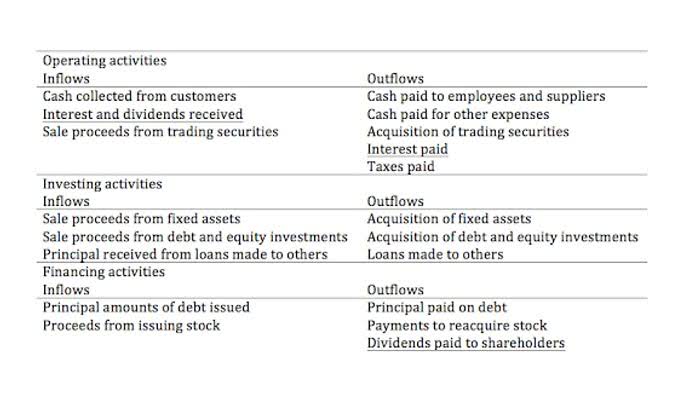
It provides detailed visibility into spending, helping optimize costs, improve budgeting, and reduce risks like fraud. This clarity also supports better stakeholder confidence, tax compliance, and overall financial efficiency. A thorough GL code breakdown is crucial for accurate financial recordkeeping, reporting, and decision-making within an organization. It ensures that what is invoice coding financial transactions are properly classified and can be easily tracked and analyzed.
What Are GL Account Codes?
- GL account types are used for tracking and categorizing different types of financial data within a company’s general ledger.
- It represents an expense for software (5100) purchased by the IT department (03) at the Spanish office (002) for a new product development project (PRJ001).
- Think of these codes as the secret sauce that helps businesses organize their finances, making sure every dollar spent or earned is tracked accurately.
- Commonly used in larger organizations, multi-dimensional coding allows AP teams to apply multiple attributes to a single invoice, such as GL account, department, business unit, region, and project code.
- If the monthly premiums totaled $5,000, $250 (5%) of the cost is posted to account # , commercial insurance expense- home office.
- This ensures that every expense is recorded in the right category and aligned with internal financial reporting and compliance standards.
- Our cutting-edge automation platform transforms the way you handle General Ledger (GL) coding along with streamlining your financial workflows like never before.
These manual coding challenges directly affect financial accuracy, staff productivity, and your ability to scale. Recognizing these pitfalls is the first step toward building a more sustainable solution. Manual invoice coding comes with several challenges, especially as the business grows or invoice volumes increase. If the marketing team created a PO for a $10,000 ad campaign coded to “Advertising Expense” (GL 6300), the invoice should use the same coding unless something has changed. Start by checking that the invoice includes all required details—vendor information, invoice date, due date, itemized charges, and payment terms. Therefore, it’s vital to implement a consistent and comprehensive GL code system that works for your business.
Corporate Policies

If you’re wondering what a GL code is in finance and accounting or how to implement GL coding effectively, this article is for you. There will always be journal entries that need to be coded manually such as accruals and depreciation and amortization expense. When an invoice is received, before it can proceed through the payment process, it must first have a GL code assigned to it.
Allocating Invoice Costs to Multiple GL Accounts
- Use of big data applications has increased 17% since 2015, (Forbes); the easier it is to sort, analyze, and display data, the better positioned your company is to make informed decisions.
- The name of the account ‘Electricity Expense’ and its account code 640 are also shown in the heading.
- When making informed business decisions, it is essential to have access to accurate and complete financial information.
- To see Order.co’s software and GL coding capabilities in action, schedule a demo today.
- You can also calculate the accounts payable turnover ratio in days, this ratio showcases the average number of days after which you make payments to your suppliers.
- Ledger code automation will save your organization an incredible about of time and money.
- It helps you save time and money, complete invoice processing in time to take lucrative early payment discounts, and understand the cash flow amount and timing needed to pay supplier invoices.
To carry out this practice, you’ll need to ensure that you have a proper accounts payable team, this team reviews supplier data for its completeness, accuracy, and compliance with standard terms. Your company is paying slowly to its suppliers if its accounts payable turnover ratio falls relative to the previous period. This falling trend in the accounts payable turnover ratio may indicate that your company is not able to pay its short-term debt, and is facing a financial crunch. Accounts payable turnover refers to the ratio which measures the speed at which your business makes payments to its creditors and suppliers, indicating the short-term liquidity of your business. You must process your invoices on a regular basis, regadless of the number of vendors you have, so you can follow the above procedure either weekly or fortnightly. This can help to reduce your workload at the months-end, and following a weekly or a fortnightly accounts payable cycle can help you avoid late payments.
With this in place, you can gain better financial insights, make informed decisions, and ultimately grow your business. The equipment account is used to track the company’s tangible assets, such as machinery and vehicles. Accounts receivable represents amounts owed to the company by customers or clients. Recognizing any sub-accounts or subcategories within the code for more specific tracking. Identifying whether the code corresponds to an asset, liability, equity, revenue, or expense account. The following is an example of some of the accounts that might be included in a chart of accounts.

Maintaining accurate accounting records means more than checking every box on your list at month-end close. Without accuracy in your underlying recording, you’ll never know if the financial reports you compile are accurate. Like anything, GL Codes and invoice processing as a whole, can be 100% specialized to fit your needs. The era of technology is upon us and testing unlimited possibilities happens at companies every day.

Expenses
Assets and liabilities help to show the current value of the company’s assets compared to its outstanding debts, providing crucial insights into whether it has a positive or negative net worth. contribution margin Each GL account needs an account name to make it easier to follow and understand as transactions are recorded. This can be particularly useful for businesses that want to closely monitor their cash flow and stay on top of their financial goals. A general ledger and a subsidiary ledger are two types of financial records that are typically used in business settings. In general, a nominal ledger account acts as a more specialized type of record-keeping within the larger system of the business’s general ledger accounts. A general ledger account and a nominal ledger account are two distinct types of financial accounts used in most businesses.

For non-PO invoices, users must analyze the invoice and assign the correct GL or cost center codes. Proper coding involves assigning these numbers to each line item on an invoice during https://www.bookstime.com/ the AP process. With rule-based automation, you can apply predefined business rules that govern how invoices should be coded. This ensures compliance with accounting policies, reduces subjectivity, and supports governance by automatically validating each coding assignment against company-defined rules. Commonly used in larger organizations, multi-dimensional coding allows AP teams to apply multiple attributes to a single invoice, such as GL account, department, business unit, region, and project code. This method supports highly granular reporting, cross-functional spend analysis, and compliance with complex internal financial structures, especially in global or multi-entity environments.
